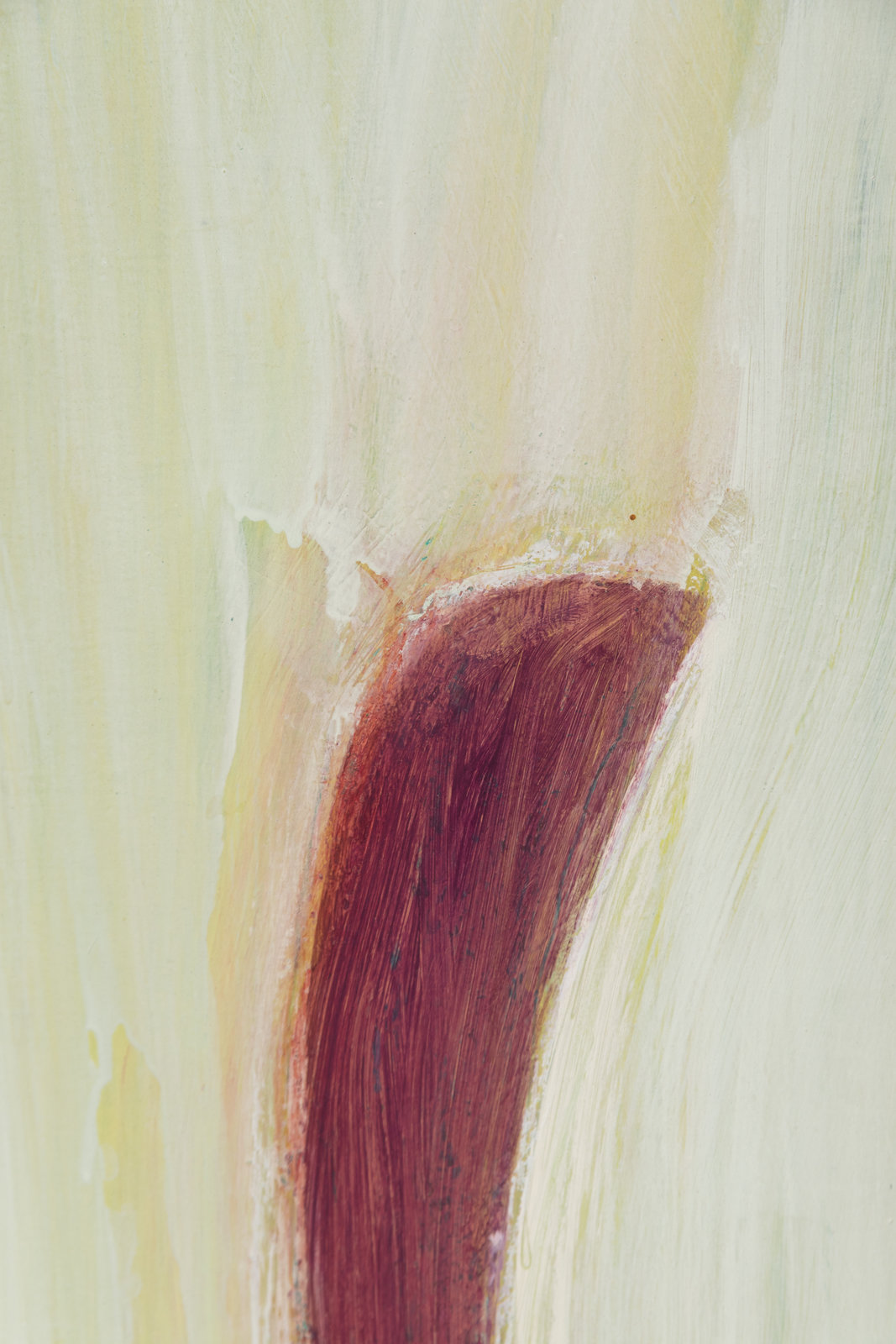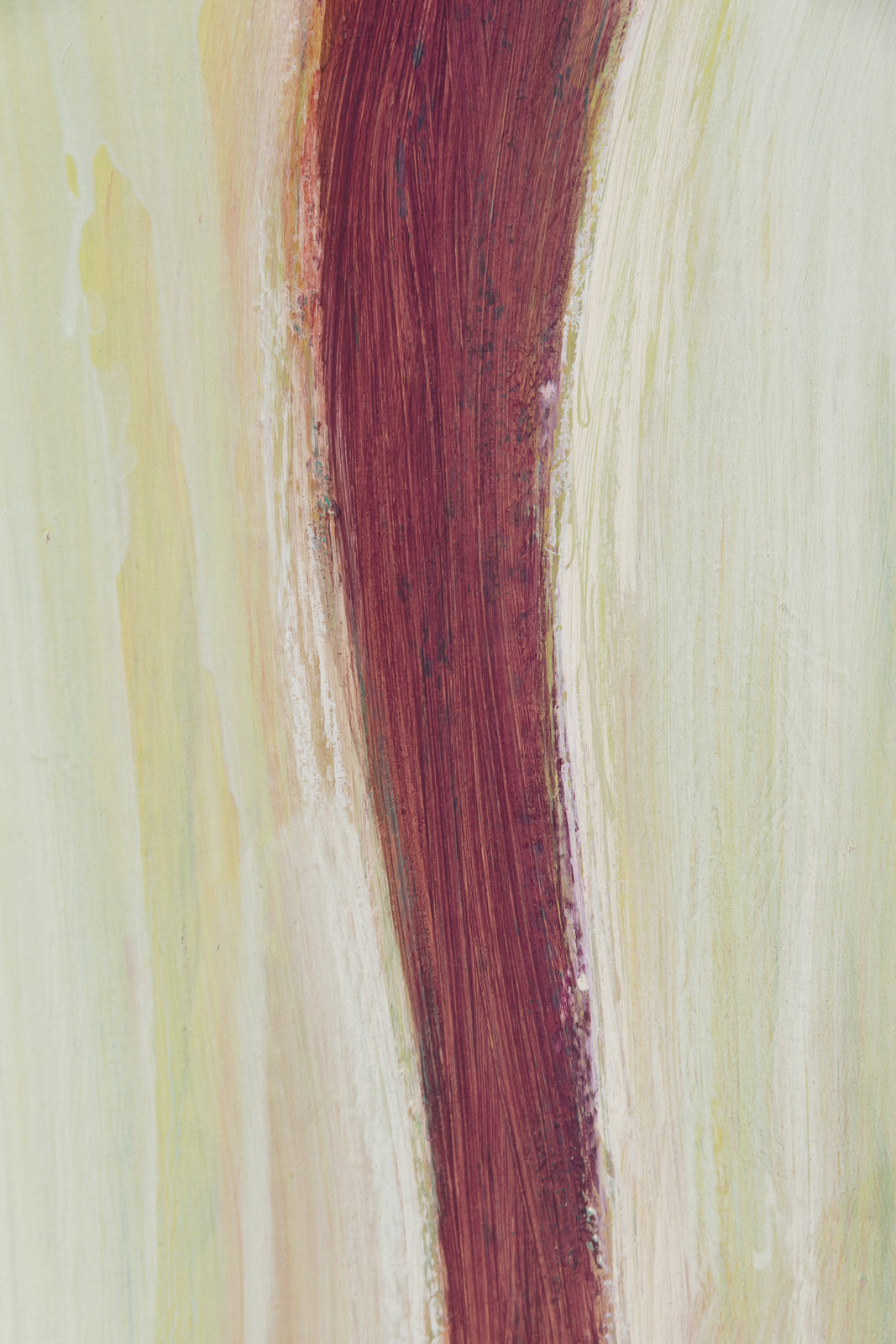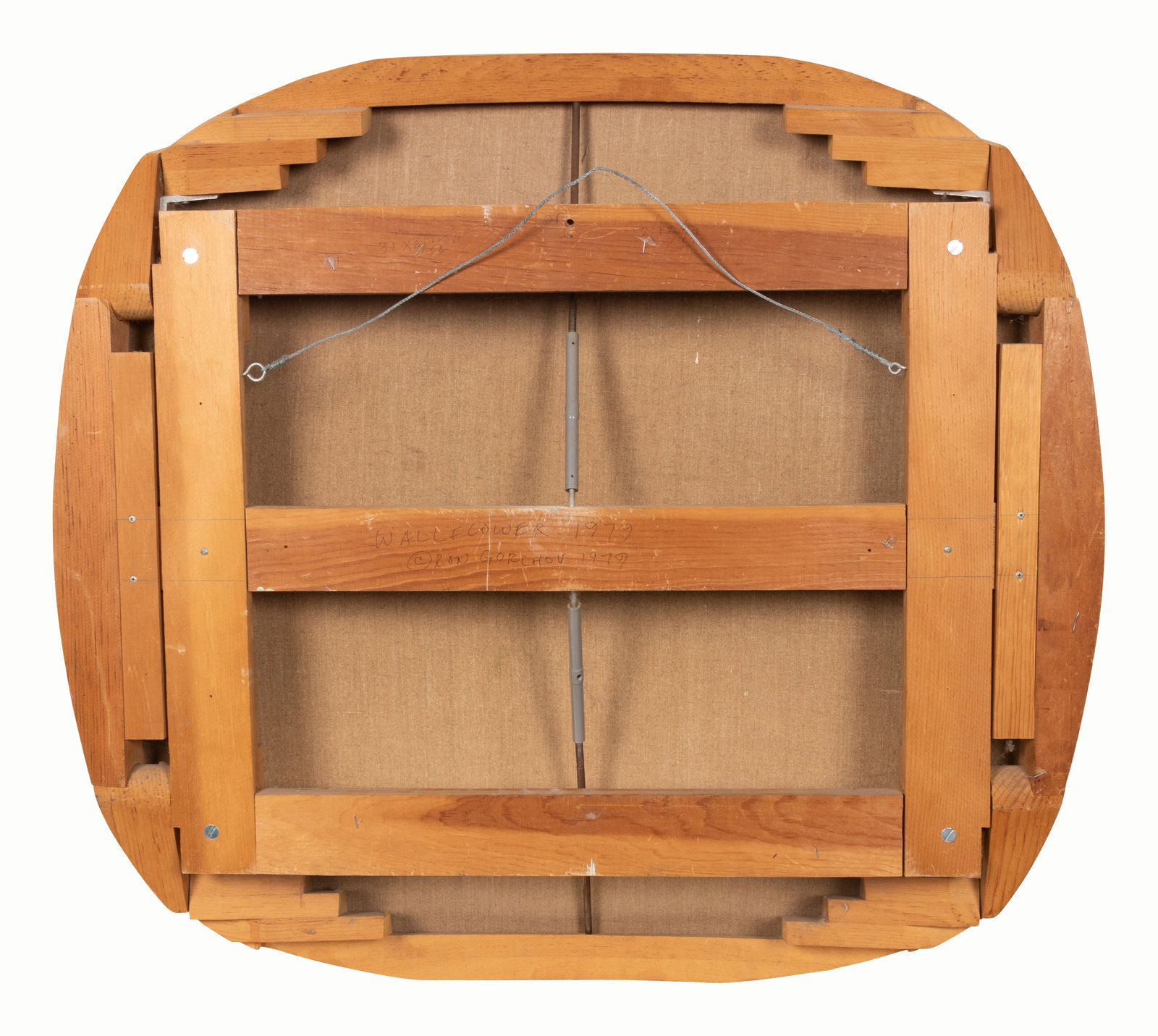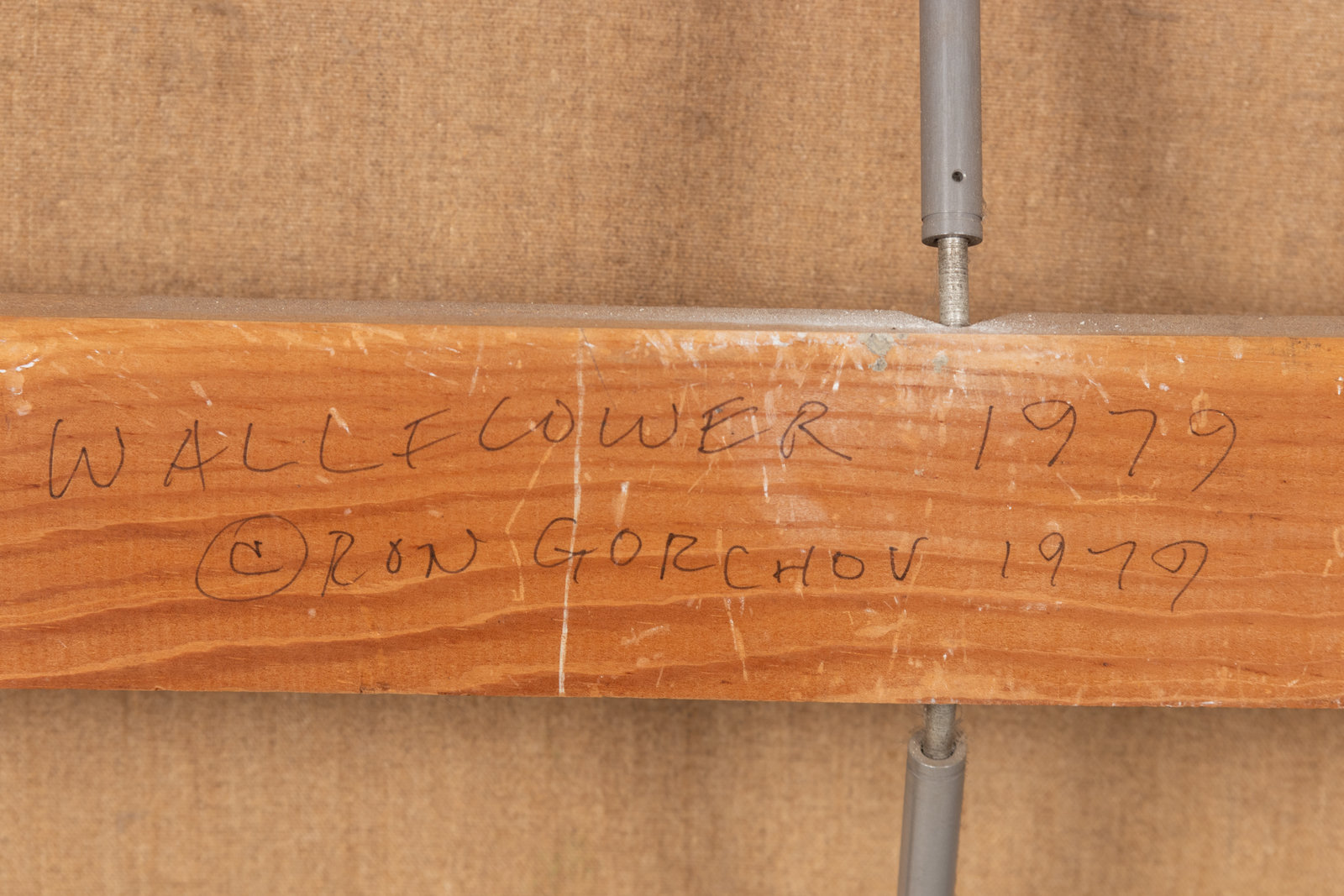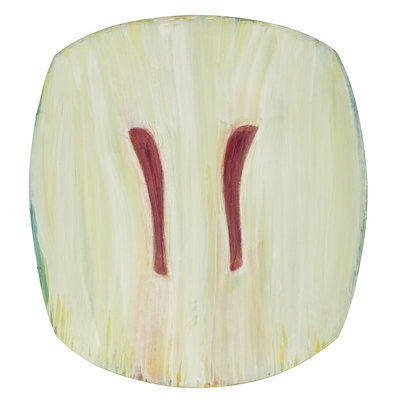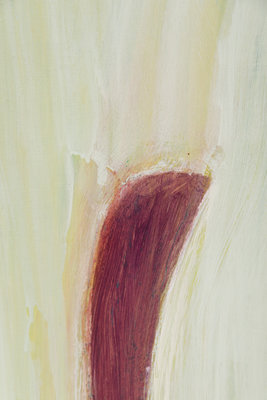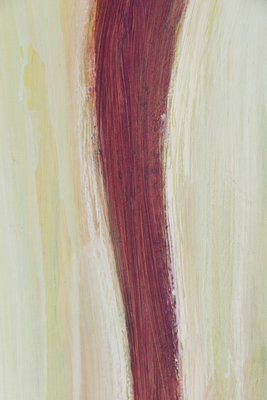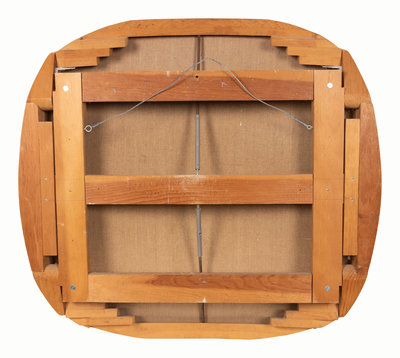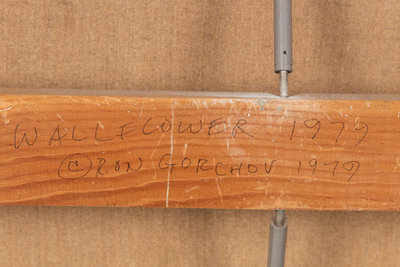Ron Gorchov
(American, b. 1930)
Wallflower
, 1979
Sale 809 - Post War and Contemporary Art
Dec 9, 2020
10:00AM CT
Live / Chicago
Estimate
$50,000 -
$70,000
Sold for $57,500
Sold prices are inclusive of Buyer’s Premium
Lot Description
Ron Gorchov
(American, b. 1930)
Wallflower
, 1979oil on shaped canvas
signed Ron Gorchov, titled and dated (verso)
31 x 32 inches.
Provenance:
Private Collection, Birmingham, Michigan
Thence by decent to the present owner
Lot Essay;
Ron Gorchov was born in Chicago in 1930 and studied locally at the School of the Art Institute Chicago and the University of Illinois, before departing for New York in 1953 to embark on his artistic career, supporting that pursuit and a family working at Cooney Island as a life guard. The protective guardian instincts required for his day job appears to have permeated into his painting practice, as in 1966 we see the emergence of the shield paintings, a theme the artist would dedicatedly explore for the next six decades. Gorchov narrowed his approach to abstract works, for this signature series, constructing arching curved wood sculptural strainers, canvas roughly stretched over exposed edges, establishing an elliptical surface supporting loosely plied subdued hues in nimbly morphing opacity. Praised for their primitive vitality and stripped-down coherence, in uniquely polarizing fashion these same attributes were points of contentions with his critics. In battle, a shield functions dually as offensive and defensive implement, this antagonistic tension, in varying degrees of subtlety, resonate throughout the painted versions, organizationally and conceptually. Armed with his freeform force fields Gorchov proved a valiant advisory to the late 20th century notion of painting being dead, steadfast in his devotion to the medium while peers abandoned paint for loftier endeavors.
Meriram-Webster’s Dictionary defines a wallflower as “any of several Old World perennial herbs (genus Cheiranthus) of the mustard family” or “a person who from shyness or unpopularity remains on the sidelines of a social activity”. Ron Gorchov’s 1979 painting Wallflower aptly satisfies both variants of the definition effusively and efficiently. Painted two years after his rarified second consecutive inclusion in the illustrious Whitney Biennial, this emblematic work clearly encapsulates Gorchov’s peaks of both production and critical acclaim.
Wallflower in composition is literally is comprised of breezy yet restrained gestural brush strokes in a pallet parallel to the pigmentation of the leaves and blooms of the European namesake plant. Vertical streaks of soft shifting greens and subtle fluctuating pale yellows amalgamate into an ethereal backdrop, evoking wood grain, leaf veins or other organic patterning, barely breathing. Twin plumes of rich earthy maroon pierce this delicately verdant ground, reading as war painted eyes or finial crests, stabilizing sensors engaging gaze and unifying the painted environment. The sophisticatedly saturated linen mounted to the hand-hewn concave substructure unapologetically without artifice, partially sculpture, the painting playfully protruding from the wall, enticing the viewer to be enveloped by and ultimately absorbed by the object’s abstract atmosphere.
In a figurative sense, Gorchov as an artist embodies this peripheral to the party persona. By no means shy about his commitment to formalist purity, he successfully embraced unpopularity with his convention rejecting stripped to essentials, saddle shaped, shield paintings, a succinct recipe with pleasing results that remained a career spanning staple. Initially heralded as groundbreaking with their charming crudeness of assembly punctuating the astutely sensitive application of color, later decried for this same elemental consistency and later still, celebrated again for faithfulness to perceived primary tents of painting. Gorchov, not so much sidelined at the painter’s spring social, but deftly dancing alone with confidence, indifferent and demanding attention with concise creation and method.
In an October 2013 interview with Nathlie Provosty for Brooklyn Rail, Gorchov stated, “There are many definitions of art, but what strikes me as art is when something’s much better than it should be, when you just can’t figure out why it’s so good.” Not coincidentally this conception applies to Gorchov’s own work, it is hard to figure out why it is so good, but so good it is. A seemingly constrained studio system which runs the risk of monotony, unexpectedly produces timeless and evergreen variations. With simplicity of focus Gorchov has cracked the code, unlocking the freedom of limitations, each shield, though organized the same way, an irrationally beautiful individual. Sadly, Gorchov passed away earlier this year, he will be remembered as a stalwart traditionalist, a tireless champion of abstraction who devised an ingenious formula for painting that left a legacy of iconic and enduring nonrepresentational work.
Condition Report
The physical condition of lots in our auctions can vary due to
age, normal wear and tear, previous damage, and
restoration/repair. All lots are sold "AS IS," in the condition
they are in at the time of the auction, and we and the seller make
no representation or warranty and assume no liability of any kind
as to a lot's condition. Any reference to condition in a catalogue
description or a condition report shall not amount to a full
accounting of condition. Condition reports prepared by Hindman
staff are provided as a convenience and may be requested from the
Department prior to bidding.
The absence of a posted condition report on the Hindman website or
in our catalogues should not be interpreted as commentary on an
item's condition. Prospective buyers are responsible for
inspecting a lot or sending their agent or conservator to inspect
the lot on their behalf, and for ensuring that they have
requested, received and understood any condition report provided
by Hindman.
Please email conditionreports@hindmanauctions.com for any additional information or questions you may have regarding this lot.

